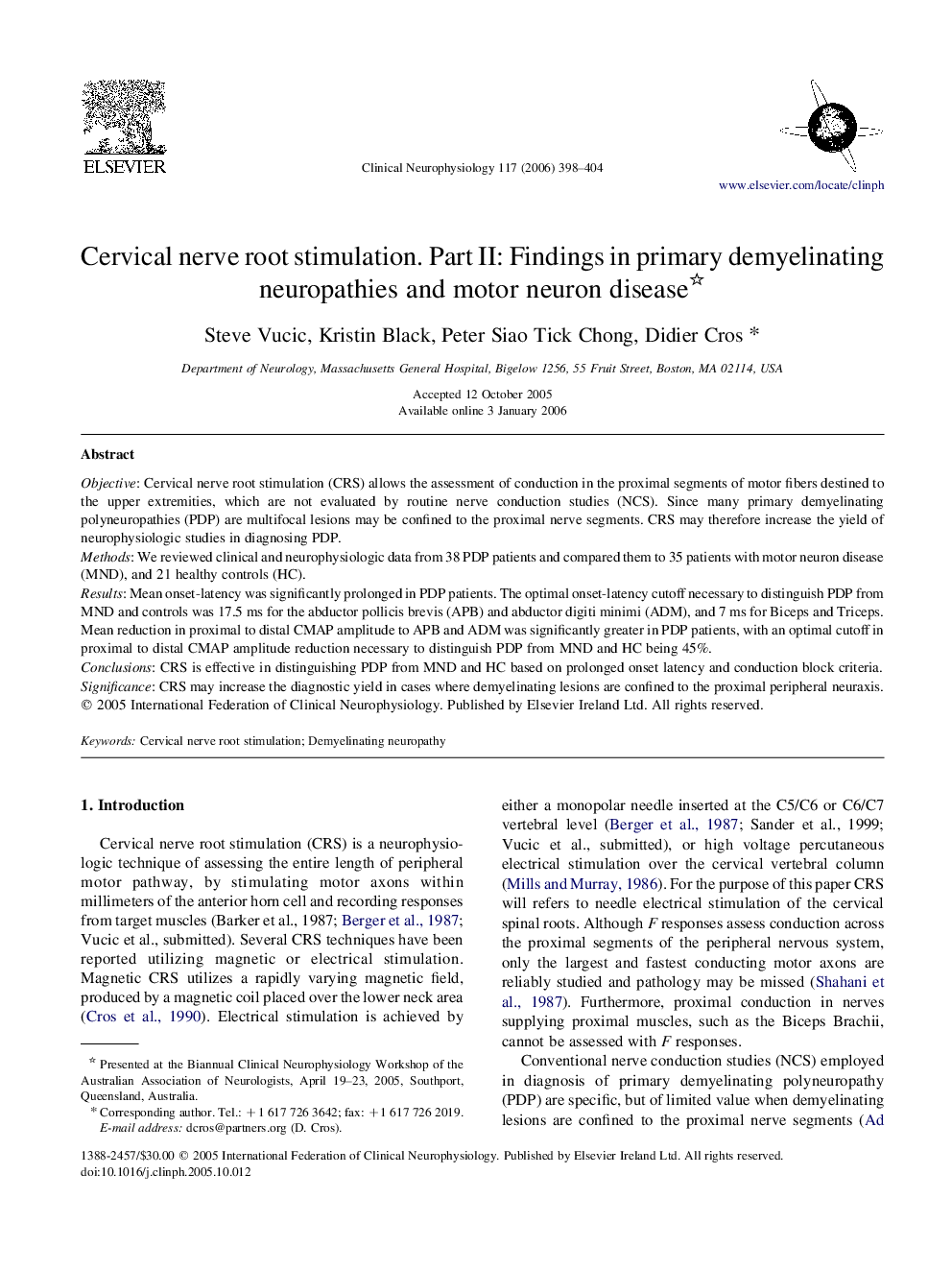| Article ID | Journal | Published Year | Pages | File Type |
|---|---|---|---|---|
| 3048146 | Clinical Neurophysiology | 2006 | 7 Pages |
ObjectiveCervical nerve root stimulation (CRS) allows the assessment of conduction in the proximal segments of motor fibers destined to the upper extremities, which are not evaluated by routine nerve conduction studies (NCS). Since many primary demyelinating polyneuropathies (PDP) are multifocal lesions may be confined to the proximal nerve segments. CRS may therefore increase the yield of neurophysiologic studies in diagnosing PDP.MethodsWe reviewed clinical and neurophysiologic data from 38 PDP patients and compared them to 35 patients with motor neuron disease (MND), and 21 healthy controls (HC).ResultsMean onset-latency was significantly prolonged in PDP patients. The optimal onset-latency cutoff necessary to distinguish PDP from MND and controls was 17.5 ms for the abductor pollicis brevis (APB) and abductor digiti minimi (ADM), and 7 ms for Biceps and Triceps. Mean reduction in proximal to distal CMAP amplitude to APB and ADM was significantly greater in PDP patients, with an optimal cutoff in proximal to distal CMAP amplitude reduction necessary to distinguish PDP from MND and HC being 45%.ConclusionsCRS is effective in distinguishing PDP from MND and HC based on prolonged onset latency and conduction block criteria.SignificanceCRS may increase the diagnostic yield in cases where demyelinating lesions are confined to the proximal peripheral neuraxis.
